15 years one-stop China custom CNC machining parts factory
 476 |
Published by VMT at Feb 04 2025 | Reading Time:About 6 minutes
476 |
Published by VMT at Feb 04 2025 | Reading Time:About 6 minutes
Face milling is a critical machining operation used extensively in manufacturing for producing smooth, flat surfaces. But how does it work? What are its advantages and limitations? And why should you consider face milling for your next CNC project? If you're wondering how this technique can improve the precision of your CNC milled parts, you've come to the right place. In this article, we will delve into the details of face milling, its applications, and how to make the most of it for your custom CNC milling needs.
Face milling is a machining process where a rotating cutter is used to remove material from the surface of a workpiece, typically a metal, to create a flat surface. The cutter’s cutting edges are positioned at the top and around its sides, making it ideal for machining flat faces, slots, and complex surfaces. Unlike other milling techniques, face milling primarily focuses on cutting surfaces at a perpendicular angle to the cutter’s axis. This method is preferred for its efficiency in removing large amounts of material while maintaining a high degree of surface finish quality.
Face milling is often employed when producing CNC milled parts for industries like aerospace, automotive, and heavy machinery manufacturing, where precision and surface quality are paramount. CNC prototype processing also frequently utilizes face milling to create accurate, detailed prototypes that can be tested for functionality and fit.
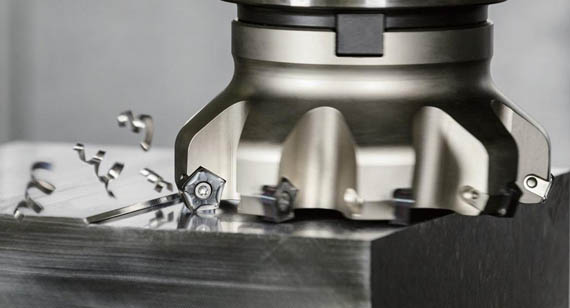
Face milling is a versatile and essential machining operation used to create flat surfaces on a workpiece. The process involves rotating a cutting tool (face mill) that removes material from the top surface of the workpiece. Face milling is commonly used in CNC milling services to achieve a smooth and uniform finish, making it ideal for applications that require high precision.
Understanding how face milling works can help optimize your manufacturing process, whether you're producing CNC milled parts or creating prototypes for testing and development.
1. Positioning the Workpiece
The first step in the face milling process is to securely position the workpiece. Proper positioning is critical for ensuring accurate machining. The workpiece is typically clamped onto a workbench, bed, or vise of the milling machine. The position of the workpiece determines the angle at which the cutting tool will interact with the surface, so it's essential to make sure the part is aligned correctly. If the workpiece is not positioned accurately, it could result in uneven cuts or poor surface finish.
For CNC prototype machining and custom CNC milling, it’s crucial to secure the workpiece tightly to avoid any movement during the operation. CNC machines can be programmed to automatically adjust the workpiece position, which increases the efficiency of the milling process and reduces human error.
2. Positioning the Milling Machine
Once the workpiece is in place, the next step is positioning the milling machine. The milling machine's tool holder is fitted with a face mill cutter. The position of the machine must be adjusted to ensure that the cutting tool makes direct contact with the workpiece at the correct angle. This positioning is typically achieved using the machine’s automatic control system, which can move the spindle and cutter in various directions to maintain precision.
In CNC milling services, machine positioning is automated using CNC programming, which controls the movement of both the workpiece and the tool. This reduces the potential for error and allows for more intricate and precise cuts compared to manual milling. Proper positioning ensures that the face mill cutter engages with the workpiece uniformly, resulting in a smooth and even surface.
3. Adjusting the Feed Rate and Spindle Speed
The feed rate and spindle speed must be adjusted based on the material being machined and the desired surface finish. The feed rate determines how fast the workpiece moves relative to the cutter, while the spindle speed controls the cutting speed of the tool. These settings are essential for achieving a balance between cutting efficiency and tool life.
Adjusting these parameters accurately is essential to avoid tool wear, vibration, or poor surface finish, which is critical for CNC milled parts that require high precision.
During the machining process, the face mill cutter rotates and removes material from the surface of the workpiece. The tool’s cutting edges are designed to remove material efficiently while maintaining a high level of precision. The face mill cutter removes material from the top surface of the workpiece, often leaving a flat surface. The direction of cutting, as well as the number of passes made by the tool, can vary depending on the depth of the cut and the type of milling operation.
In CNC prototype processing, face milling is often used to create a precise and smooth surface that can be used for testing or as a foundation for further machining operations. CNC machines are programmed to execute precise movements that allow for repeatable and accurate milling, making it an ideal process for custom CNC milling services.
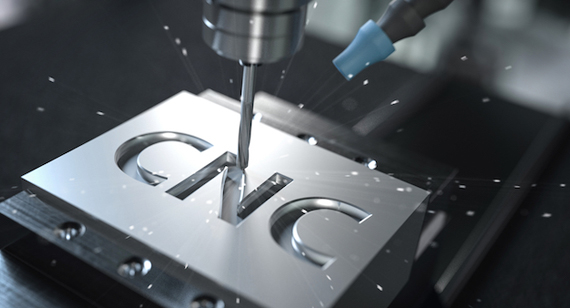
Choosing the right face milling cutter is crucial to achieving the desired results in terms of cutting efficiency, surface finish, and tool longevity. Face milling cutters come in various designs based on both geometry and structure. Understanding these classifications will help you choose the best tool for your specific project needs.
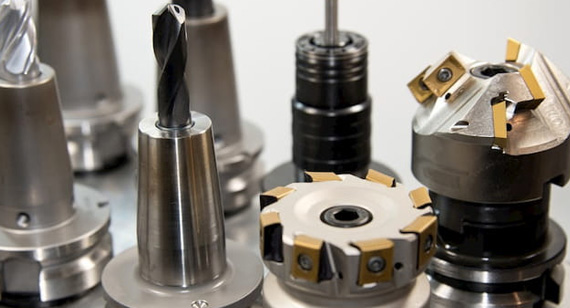
Classification of Face Milling Cutters Based on Tool Geometry
Classification of Face Milling Cutters Based on Tool Structure
By carefully selecting the right face milling cutter, you can ensure that the machining operation is efficient, accurate, and suitable for the specific demands of your project. Whether you're producing large, rough parts or detailed, high-precision CNC milled parts, choosing the right cutter is critical to achieving the best possible results.
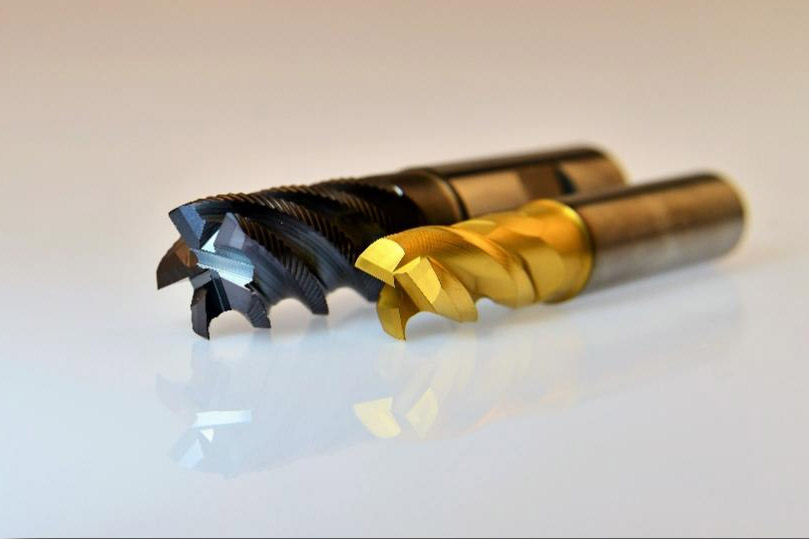
Advantages of Face Milling
Face milling is a highly versatile machining operation widely used in CNC milling services to achieve precise, high-quality results across a range of industries. Whether you’re working with CNC milled parts or conducting CNC prototype machining, face milling provides numerous benefits that make it a go-to technique for many applications. Let's take a closer look at the main advantages of using face milling in manufacturing.
1. Flatness and Precision
One of the biggest advantages of face milling is its ability to produce flat and precise surfaces. This is especially important in industries where dimensional accuracy is critical, such as aerospace, automotive, and electronics manufacturing. The feed rate and spindle speed can be carefully adjusted during face milling to ensure that the resulting surface is smooth, consistent, and meets stringent design requirements.
For CNC milling factories, the precision provided by face milling is a key factor in ensuring that parts fit together properly during assembly. Whether you're producing custom CNC milling parts or large-scale components, the ability to create consistently flat surfaces ensures that further machining or assembly processes can be completed accurately, leading to higher-quality end products.
2. Smooth Surface Finish
Face milling is also renowned for delivering a smooth surface finish. By using specific tools, such as end mills and face mills, the process removes material in a way that minimizes tool marks and imperfections, providing a clean, polished surface. This is particularly beneficial in CNC prototype machining where a high-quality finish is often needed for both functional and aesthetic purposes.
The quality of the surface finish is crucial for industries like medical device manufacturing, where the finish not only impacts appearance but also performance. Additionally, a smooth surface finish reduces the need for further post-processing, which can save both time and cost in production.
3. High Material Removal Rate
Face milling is an efficient method for high material removal rates (MRR), making it ideal for operations that require rapid material removal from a large workpiece. This is especially useful in CNC milling services where time is often a critical factor. Face milling can remove material quickly and efficiently without sacrificing the accuracy of the cut.
In heavy-duty operations, such as aerospace component manufacturing, face milling is employed to rapidly remove bulk material, preparing the part for finer finishing operations. This ability to balance material removal with precision ensures that manufacturing processes are both quick and cost-effective, contributing to lower overall production costs.
4. Versatility
Face milling is highly versatile, capable of handling a wide range of materials and machining tasks. Whether you're milling a soft metal like aluminum or a harder material like steel, face milling is adaptable to different materials and tool geometries. This flexibility is key when working with custom CNC milling projects that involve various material types and specifications.
In addition to materials, face milling can also be applied to different workpiece shapes, including flat surfaces, slots, and even large, complex parts. The flexibility offered by face milling makes it an essential operation for CNC prototype processing, where customization and adaptability are often required.
5. Durability of Face Milling Cutter
The durability of the face milling cutter is another significant advantage. With proper tool selection and maintenance, these cutters can withstand the stresses of continuous operation, leading to longer tool life and lower overall costs. For industries that rely on high-precision CNC milled parts, the durability of the cutting tool ensures consistent performance, even with heavy workloads.
Tool life can be extended further by choosing high-quality materials for the cutters, such as carbide or high-speed steel (HSS). CNC milling factories can optimize production costs by using face mills that offer a balance between durability and performance, reducing downtime caused by frequent tool changes.
Despite its many advantages, face milling does come with certain limitations that manufacturers should be aware of. While it is a versatile and efficient operation, there are specific challenges associated with it that may affect its overall cost-effectiveness and suitability for particular applications. Below are some of the common disadvantages of face milling.
1. Higher Tooling Costs
One of the most notable disadvantages of face milling is the higher tooling costs. Face mills, especially those made from materials like carbide, can be expensive compared to other types of milling cutters. The initial investment in high-quality tooling can add to the overall cost of production, particularly for industries or projects that involve large volumes of parts.
Additionally, while the durability of face milling cutters is an advantage, tool wear and tear can still result in significant replacement costs over time. For CNC milling services offering custom CNC milling solutions, careful consideration must be given to the tool selection to balance cost and performance.
2. Complex Tool Setup
Face milling requires a complex tool setup, particularly when working with large or irregularly shaped workpieces. Aligning the cutter and workpiece correctly is essential to achieving the desired surface finish and dimensional accuracy. For CNC milling factories, this means spending extra time ensuring that the machine is calibrated properly for each operation.
Improper setup can lead to machining errors, inconsistent results, or even damage to the workpiece. This complexity can make face milling less ideal for small-batch or low-volume production runs, where setup time and cost are more significant concerns.
3. Limited to Flat Surfaces
Another limitation of face milling is that it is limited to flat surfaces. While face milling is excellent for smoothing and shaping flat surfaces, it cannot be used to mill complex, three-dimensional geometries, such as holes or deep pockets. For these types of operations, additional milling techniques, such as end milling, may be required.
In CNC prototype machining, this limitation is often addressed by incorporating multiple machining operations to achieve the desired shape. However, in applications that require CNC milled parts with intricate geometries, face milling may need to be used in conjunction with other techniques, increasing the complexity of the machining process.
4. Inconsistent Surfaces on Large Workpieces
When milling large workpieces, inconsistent surfaces can sometimes result, especially if the workpiece is not properly secured or if the face mill does not cover the surface evenly. This can be particularly problematic in large-scale manufacturing or CNC prototype processing, where precision is paramount.
Inconsistent surface finishes on larger parts can also occur due to tool wear or improper feed rates. To mitigate this, it’s crucial to monitor tooling conditions regularly and adjust machining parameters as needed to ensure the best possible outcome.
Conclusion
Face milling offers several distinct advantages, including flatness and precision, smooth surface finishes, and high material removal rates. However, there are challenges, such as higher tooling costs, complex tool setup, and limitations when working with non-flat surfaces. Understanding both the advantages and disadvantages of face milling is key to selecting the right machining processes for your specific project. By balancing these factors, manufacturers can achieve the best results in CNC milled parts, CNC milling services, and custom CNC milling projects.
Face Mills: Coatings and Materials
In CNC milling, the performance of a face mill is determined not only by its design but also by the materials and coatings used in its construction. The right choice of tool material and coating can significantly impact the tool life, cutting performance, and surface finish of the machined part. This is especially important in high-demand operations such as custom CNC milling and CNC prototype machining, where precise results and cost efficiency are paramount. Let's explore the key coatings and materials used in face mills to ensure optimal performance.
Common Tool Coatings for Face Mills
Coatings for face milling cutters enhance their durability, performance, and resistance to wear, heat, and corrosion. These coatings are applied to the cutting edges of the face mills, improving cutting efficiency and extending tool life. When choosing a coating for face mills in CNC milling services, several factors like the material being milled, the cutting speed, and the working environment must be considered.
Titanium Nitride (TiN)
Titanium Nitride (TiN) is one of the most commonly used coatings in the milling industry. This hard coating offers several benefits for face milling applications:
For industries such as aerospace or automotive, where high precision is required, TiN-coated face mills can achieve the balance of durability and cutting performance needed for CNC prototype processing and high-volume production.
Diamond Coatings
Diamond coatings, often referred to as polycrystalline diamond (PCD), offer superior properties compared to TiN for certain types of materials:
While diamond-coated face mills are more expensive, they provide a high return on investment in industries like medical device manufacturing, where precision and tool longevity are crucial for CNC milling services.
Tool Materials: Carbide vs. High-Speed Steel (HSS)
The choice of tool material is critical to the performance of face mills. The two most commonly used materials are carbide and high-speed steel (HSS). Both materials have their advantages and limitations, depending on the application, material to be milled, and overall cost considerations. Let’s examine the key differences between these two materials.
Carbide
Carbide is a popular choice for face milling cutters due to its superior properties:
While carbide is an excellent choice for CNC milled parts that require high precision and durability, it is more brittle than HSS and may break under heavy impact or shock loading, which needs to be taken into consideration during machining operations.
High-Speed Steel (HSS)
High-speed steel (HSS) is another material used in face milling cutters, known for its unique properties:
HSS face mills are a good choice for general-purpose machining and CNC prototype machining when cost-effectiveness and versatility are more important than ultimate hardness and durability.
Face milling is a versatile machining process that can be used for various types of operations, each with its own specific purpose. These operations allow manufacturers to achieve different surface finishes, material removal rates, and machining efficiencies. Understanding the different types of face milling operations helps in selecting the most appropriate method for each job.
1. General Face Milling
General face milling refers to the most common form of face milling, used for achieving flat surfaces and smooth finishes. This operation is typically performed with standard face milling cutters and is ideal for finishing operations on CNC milled parts. It involves the cutting tool’s teeth contacting the surface of the workpiece, removing material to produce a flat, smooth surface.
This operation is versatile and widely used for a variety of materials, such as steel, aluminum, and plastics, in both CNC milling factories and custom CNC milling services.
2. Heavy Face Milling
Heavy face milling is used when a high material removal rate is needed. In this operation, larger cutting depths and higher feeds are employed, and the face mill may be equipped with more inserts to handle the increased load. Heavy face milling is commonly used for roughing operations and large workpieces in industries like automotive and aerospace.
For heavy-duty operations, carbide face mills are often the preferred tool material due to their durability and ability to withstand the high forces involved in material removal.
3. High Feed Milling
High feed milling is a technique that utilizes a face mill with a higher number of inserts to increase the material removal rate while maintaining low cutting forces. This operation is especially useful when high speeds are required and tool life is a concern. It is commonly used for producing high-precision CNC milled parts in industries that require efficient and fast material removal, such as the automotive and electronics sectors.
High feed milling is typically paired with CNC automation to achieve the best performance.
4. Finishing with Wiper Inserts
Finishing with wiper inserts involves the use of specialized wiper inserts on a face milling cutter to improve surface finish. These inserts help create a smooth surface with reduced tool marks, which is essential in finishing operations. Wiper inserts are often used in CNC prototype machining or custom CNC milling when a high-quality finish is needed without the need for additional finishing processes.
This type of milling operation is ideal for parts requiring precision and a superior surface finish, particularly in industries like medical device manufacturing and electronics.
When selecting the right tool for face milling, several engineering considerations must be taken into account to ensure optimal performance and cost efficiency:
By following these tips, you can make an informed decision that improves the efficiency and effectiveness of your CNC milling services and CNC prototype processing operations.
Successful face milling requires careful planning and attention to various factors to achieve the desired results. Whether you're working in a CNC machining factory, offering custom CNC milling services, or executing CNC prototype machining, following best practices will ensure that the operation is efficient, precise, and cost-effective. The right choices in tooling, machine settings, and process techniques can improve surface finish, extend tool life, and reduce downtime. Let's dive into the key best practices to optimize your face milling operations.
Choosing the Right Tool
Selecting the correct face milling cutter is crucial for achieving the desired results in your machining process. Consider the material of both the tool and the workpiece, the desired finish, and the required cutting speed.
Having the right face milling cutter significantly impacts the overall efficiency and effectiveness of the operation.
Maintaining Proper Tool Balance
Tool balance is another crucial factor that can influence the success of face milling operations. Imbalanced tools can cause vibration, leading to premature tool wear, poor surface finish, and potential damage to the milling machine. Ensuring that your cutter is balanced reduces vibration, improves cutting stability, and helps achieve higher surface quality on CNC milled parts.
Proper tool balance ensures smoother cutting, better surface finishes, and extended tool life.
Using Recommended Spindle Speeds
Selecting the correct spindle speed plays a critical role in the success of your face milling operation. Running the spindle too fast or too slow can lead to issues such as poor surface finish, increased tool wear, or even damage to both the tool and the workpiece. Spindle speed depends on several factors, including the tool material, workpiece material, and cutting conditions.
By using the appropriate spindle speeds for your operation, you can achieve higher-quality finishes and longer tool life.
Don’t Mill Slots or Holes
While face milling is great for creating smooth, flat surfaces, it is not designed for milling slots or holes. Milling slots or holes with a face mill can result in poor surface finishes, increased tool wear, and inconsistent results. Use other milling operations such as end milling or drilling for creating slots, pockets, or holes.
By reserving face milling exclusively for surface flattening and finishing operations, you can ensure that the operation is both effective and efficient, reducing the time and cost associated with tool wear.
Take Advantage of CNC Automation
CNC automation is a game-changer when it comes to face milling operations. Automating the process not only improves efficiency but also enhances precision and repeatability. Here’s how automation can make a significant difference:
By integrating CNC automation into your face milling operations, you can ensure faster, more reliable results with higher precision, which is crucial in industries such as medical device manufacturing and aerospace.
Both face milling and peripheral milling are essential machining processes used to shape and finish a workpiece. However, these two operations have distinct characteristics and are suited for different types of jobs. Understanding the differences between face milling and peripheral milling can help you choose the right technique for your CNC milled parts or CNC prototype machining projects. Let's explore the key distinctions between these two milling operations.
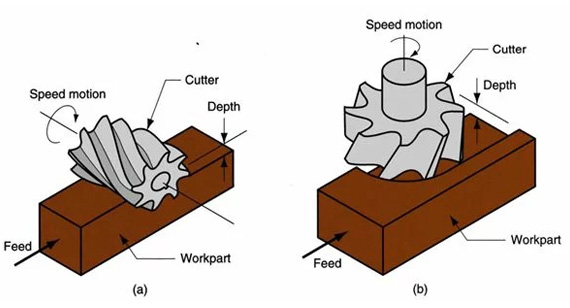
Surface Finish Comparison
The surface finish achieved by face milling is generally smoother than that of peripheral milling. In face milling, the cutting tool’s teeth engage the surface of the workpiece directly, producing a clean and smooth finish. This makes face milling ideal for operations that require precise flatness and high-quality surface finishes.
In peripheral milling, the tool engages only the edges of the workpiece, leading to a slightly rougher finish. However, peripheral milling can be more effective when working on certain shapes, such as deep slots or external profiles.
Material Removal Rate Differences
When it comes to material removal rate, peripheral milling often outpaces face milling in terms of cutting depth and material removal per pass. In peripheral milling, the tool works across the side of the workpiece, allowing for deeper cuts and higher material removal rates.
On the other hand, face milling works with the flat surface, which typically limits the cutting depth. However, face mills can achieve higher feed rates in terms of surface area, allowing for efficient material removal in applications where precision and flatness are more critical than depth.
Cutting Direction
The cutting direction in face milling and peripheral milling can also impact the overall performance and surface finish. In face milling, the cutter rotates perpendicular to the surface, and the teeth of the cutter engage the workpiece in a climb milling or conventional milling direction, depending on the setup. This provides a smooth cut and reduces the likelihood of tool deflection.
In peripheral milling, the tool rotates along the circumference of the cutter, cutting across the workpiece surface. This operation is more effective for creating complex contours or machining along the periphery of parts, such as external profiles.
By understanding the differences between face milling and peripheral milling, manufacturers can optimize their machining processes, choosing the appropriate method based on the specific needs of each job. Whether you need a smooth surface finish, high material removal, or the ability to machine complex profiles, selecting the right milling operation can significantly improve efficiency and reduce costs.
Practical Tips for Optimizing Face Milling Processes
Optimizing face milling processes is key to ensuring that your CNC machining operations are both efficient and cost-effective. Whether you're working with CNC milled parts or offering custom CNC milling services, applying best practices in face milling can significantly improve the quality of your finished products, reduce tool wear, and minimize setup times. In this section, we will explore practical tips that help streamline the face milling process, making it more effective and producing high-quality results.
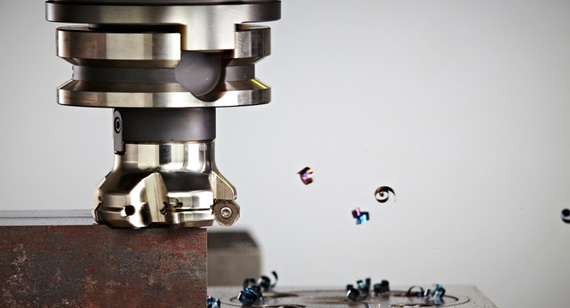
1. Tools are Critical
The selection of the right tool is one of the most crucial factors in ensuring the success of your face milling operation. The tool material, coating, geometry, and structure all play vital roles in achieving high-performance results.
Choosing the right tool is the first step in achieving precision, high-quality finishes, and longer tool life in CNC prototype machining and custom CNC milling projects.
2. Set Specific Settings for Face Milling
Once the correct tool is chosen, it's essential to set up your CNC milling machine with the appropriate settings for optimal performance. Spindle speed, feed rate, and cut depth must be tailored to the workpiece material and tool type.
By fine-tuning these settings, you can achieve a smoother surface finish, increase material removal rates, and reduce wear on both tools and the machine.
3. Ensure Milling Parameters Are Correct
Optimizing milling parameters is crucial for achieving the desired outcomes in face milling. Each part of the milling process, from the tool’s cutting angle to the coolant system, affects the quality of the finished product.
These parameters should be reviewed and adjusted for each specific job to ensure that you're getting the most out of your CNC milling machine and your face milling operation.
4. Make Sure Your Cutting Tools Are Sharp
Sharp cutting tools are essential for a clean and precise milling operation. Dull tools can cause poor surface finishes, increased tool wear, and longer cycle times. Regularly checking and maintaining the sharpness of your tools is crucial for smooth operation.
Incorporating regular tool maintenance into your process is essential to avoid disruptions and ensure that your face milling operations stay efficient and precise.
If you're looking for high-quality CNC milling services, VMT offers custom CNC milling solutions that cater to a wide range of industries and applications. From CNC prototype machining to high-volume production, we provide precision machining that guarantees a superior surface finish, tight tolerances, and reliable results.
Our team of skilled engineers is well-versed in optimizing face milling processes, ensuring that your parts meet the most stringent specifications. Whether you need rapid prototyping or large-scale manufacturing, VMT is committed to delivering top-notch CNC milled parts that meet your exact needs.
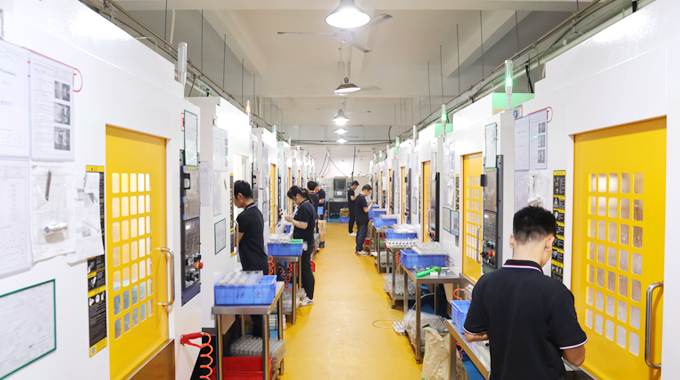
Optimizing the face milling process involves careful selection of tools, fine-tuning milling parameters, and ensuring that your tools are in top condition. By following these best practices, manufacturers can enhance surface finish, increase material removal rates, and improve overall efficiency in custom CNC milling and CNC prototype machining. With the right approach, face milling can become an even more powerful tool in your machining arsenal.
By leveraging CNC automation and continuously refining these processes, manufacturers can significantly reduce costs, improve turnaround times, and achieve superior results on every project.
What is the main difference between face milling and end milling?
The primary difference between face milling and end milling lies in the type of surfaces they are used to machine. In face milling, the cutter's teeth engage the workpiece surface directly at a 90° angle, allowing for the creation of flat surfaces. This type of milling is typically used for surface flattening and material removal. On the other hand, end milling uses a vertical or horizontal cutting tool that cuts both on the tip and along the sides, allowing for more intricate and complex shapes, such as slots, grooves, or contours. Face milling is ideal for creating wide, flat surfaces, while end milling is better suited for detailed cuts and precision work.
What are the different cutters used for face milling?
For face milling, several types of cutters can be used depending on the application. These include:
Each of these cutters offers different benefits, from the ability to produce sharp, clean edges to minimizing tool wear during heavy-duty cutting.
How many types of face milling operations are there?
There are four main types of face milling operations, each suited for specific tasks:
Each type of operation is selected based on the material, depth of cut, and desired surface finish.
What is face milling used for?
Face milling is typically used to create a flat surface on the workpiece and is often employed in surface flattening, material removal, and finishing operations. It's also an essential process in preparing parts for subsequent operations, such as drilling or tapping, and for slot and groove milling. Face milling ensures that the surface of the material is smooth, level, and precisely machined to the required dimensions.
What is the difference between flat milling and face milling?
Flat milling refers to the milling process where the cutter moves along the surface of the material but does not necessarily create a perfectly flat surface. It's often used to machine parts with specific dimensions, grooves, or slots. Face milling, in contrast, specifically focuses on machining the flat face of the workpiece, producing a high level of flatness and smoothness. In face milling, the cutting tool is positioned perpendicular to the surface, ensuring a precise, flat finish.
What is the difference between a fly cutter and a face milling cutter?
A fly cutter is a single-point cutting tool used primarily for surface flattening and broad, flat milling operations. It typically has one cutting edge and is slower than face milling. In contrast, face milling cutters have multiple cutting edges, which make them more efficient for high material removal rates and precise surface finishes. Fly cutters are more often used for rough machining, while face milling cutters are preferred for achieving smoother and more accurate finishes.
How deep can you cut with a face milling cutter?
The cutting depth when using a face milling cutter generally depends on the material being milled and the type of cutter being used. For general face milling, the depth of cut can range from 0.5 mm to 5 mm per pass. Heavy face milling operations can handle deeper cuts, with depths of up to 10 mm or more. However, deeper cuts are typically limited by tool rigidity, material hardness, and machine capabilities.
What is the difference between face milling and regular milling?
While regular milling can refer to a wide range of milling operations (including both face milling and end milling), face milling is specifically used to machine flat surfaces. In face milling, the cutting tool engages the workpiece perpendicularly to remove material across a wide area, typically to create a flat surface. Regular milling might involve a variety of other operations, such as cutting slots, holes, or contours, and can be performed using both end mills and face mills.
What is the main purpose of milling?
The main purpose of milling is to cut, shape, and modify material into a desired form, size, and finish. Milling processes are commonly used for making precision parts, including CNC milled parts, that require exact dimensions, smooth surfaces, and intricate features. Milling can be used for a variety of operations, such as face milling, slot milling, drilling, and contour cutting, across various materials like metals, plastics, and composites.
What is the point of milling?
The point of milling is to create accurate, complex parts that cannot be achieved using other machining methods like turning or drilling. Milling offers precision, versatility, and the ability to work with a wide range of materials. By using CNC milling machines, manufacturers can achieve tight tolerances, smooth finishes, and intricate geometries that are essential for high-quality, functional parts.
Why is milling better than drilling?
Milling and drilling are both essential machining processes, but milling offers several advantages over drilling. While drilling is mainly used to create holes, milling allows for more complex and versatile cutting operations, including the ability to create flat surfaces, grooves, slots, and contours. Milling also provides greater precision, material removal rates, and the ability to handle more intricate shapes. Face milling, for example, is ideal for flattening surfaces and removing large amounts of material, which drilling cannot achieve.
What is the difference between a face milling cutter and an end mill?
A face milling cutter is primarily designed for machining flat surfaces and operates by cutting at a 90-degree angle to the workpiece. It is ideal for creating large, flat surfaces and smooth finishes. In contrast, an end mill can cut in various directions, including vertically and horizontally, and is often used for creating slots, holes, and contours. While face milling cutters are used for broad, flat cuts, end mills are more versatile and suitable for more detailed machining tasks.
What are the advantages and disadvantages of milling?
Advantages of milling:
Disadvantages of milling:
When to use a face milling cutter?
A face milling cutter should be used when you need to achieve a flat, smooth surface or when high material removal rates are required. It’s ideal for operations that involve the machining of large, flat surfaces, as well as when preparing parts for subsequent operations such as drilling or tapping. If you need precision and flatness on a wide surface, face milling is the go-to solution.
